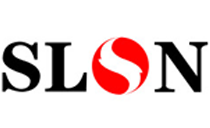What is rfid ?
With the promotion of the Internet of Things and RIFD technology, combining RFID technology with existing information security technologies can achieve product supply chain traceability and ensure the safety of products in the circulation process. Speaking of RFID, I believe many friends find it strange, but in fact, RFID is often used in our lives, such as library books, tag tags on some clothes, and luggage tags at airports. All of these use RFID technology. So, what exactly is RFID? What are the characteristics of RFID applications? Next, let's get to know about it with slonrfid~
RFID is an abbreviation for Radio Frequency Identification, or Radio Frequency Identification. It is mainly a contactless automatic identification technology that utilizes radio frequency signals and their spatially coupled transmission characteristics to achieve automatic identification of stationary or moving items to be identified. The RFID system is mainly composed of a reader/writer (target), a transponder (RFID tag), and a background computer.The reader realizes the reading, writing, and storage of tag data, and is composed of a control unit, a high-frequency communication module, and an antenna; Tags are mainly composed of an integrated circuit chip and an external antenna. Circuit chips typically include RF front-end, logic control, memory, and other circuits. Passive tags are favored due to their low cost and small size. Therefore, currently large-scale commercial applications are generally passive tags, and the lowest cost of a tag can be achieved by a few cents.
When an object equipped with an RFID electronic tag enters the microwave antenna coverage area, the RFID reader is controlled to send out a microwave query signal. After receiving the query command, the RFID electronic tag installed on the surface of the object will reflect the data information in the RFID tag back to the microwave antenna according to the command content in the query signal.
After receiving the data signal reflected back from the RFID electronic tag, the microwave antenna is analyzed and processed by the RFID reader to separate the identification code, stored data, and other information from the RFID electronic tag. Through the network, the reader transmits information as object characteristic data to the control computer for further processing, thereby realizing applications such as object related information registration, query, statistics, and management. The entire identification process requires no human intervention and can work in various harsh environments. RFID technology can identify high-speed moving objects and identify multiple tags at the same time. The reader can determine whether the RFID tag has been repeatedly read and processed. Depending on the wavelength of the microwave, the distance between the RFID reader and the RFID electronic tag can range from 5cm to 1km.
What are the characteristics of RFID?
There are some similarities in the nature of RFID, one-dimensional code, and two-dimensional code. Both require a target carrier to store information and identify the information on the carrier through remote reading means. At this stage, some commercial applications often replace the operations that originally need to be completed by scanning barcodes with RFID and RFID tags to achieve faster and more convenient scanning and help enterprises improve efficiency and reduce costs.

SLon is a professional company engaged in RFID research and development and to provide intelligence and information system solutions for high-tech enterprise, our long-term worldwide schools, banks, supermarkets, tourist attraction, intelligent buildings, government agencies and related industries to provide the most advanced security management services.



